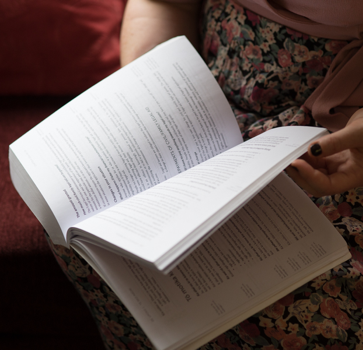Getting protection under the Harassment Act
Applying for a restraining order
Will I need a lawyer to apply for the order?
Although it’s possible to apply for a Restraining Order without a lawyer, it’s a challenging process and it’s usually a good idea to use a lawyer.
If you’re on a benefit or a low income, you may qualify for civil/family Legal Aid (see: “Family/civil Legal Aid”). If you’re granted civil/family Legal Aid, you may have to pay some or all of it back.
If you decide to apply for a Restraining Order without a lawyer, you’ll need to go to the District Court and get the necessary forms and documents. Your local Community Law Centre or the District Court staff can give you more information and may be able to help support you to apply yourself.
How do I apply for the order?
District Court Rules 2014, rules 20.30–20.39, Forms 92, 94
To apply for a Restraining Order, you’ll need to fill out an application form and several other documents, and then sign them (or get your lawyer to sign them). You then take your completed application form and documents to the local District Court (called “filing” them with the court).
The documents you’ll need to complete are the:
- Application form – Here you set out your details and the harasser’s details, how long you want the Restraining Order to be in place for, and any special conditions you want included in the order (for example, banning the harasser from going to a particular public place you visit often).
- Affidavit in support – This is a sworn statement from you in which you tell your story and provide all the facts showing why you think a Restraining Order should be granted. This includes describing each specific act of harassment, how the harassment has made you feel, and details of any contact you’ve had with the police about it.
- Notice of proceeding – This tells the harasser (the “respondent”) that you’ve applied for a Restraining Order against them. The District Court will send this notice to the harasser, along with a copy of the application form and your affidavit. The notice also explains the harasser’s rights to defend (“oppose”) your application and the process for doing this.
How much does it cost to apply for a Restraining Order?
It doesn’t cost you anything – there’s no application fee for filing a Restraining Order in the District Court. However, if you use a lawyer, you’ll need to pay the lawyer’s fees.
What if I don’t know the name of the person harassing me?
Harassment Act 1997, ss 26, 27, 28
If you don’t know the name and address of the person harassing you, you can make a complaint to the police and give them whatever information you can to help the police find and identify the person – for example, what they look like and where they might be found. You can complain to the police in this situation whether or not the person’s behaviour amounts to criminal harassment.
When the police find the person, they can require them to give their name and address, provided the police have reasonable grounds to suppose that the person has in fact harassed you. The police can also require them to provide proof of their name and address if they believe on reasonable grounds that the person has given false details.
If the person refuses to give the information, and continues to refuse after they’ve been warned, the police can arrest them. It’s an offence to refuse to provide the information, or to provide proof of name and address when asked for it, and, if convicted in court, the person can be fined up to $500.
Once the police have the harasser’s details, they can, at your request, give the information to the registrar at the local District Court, so that you can complete your application for a Restraining Order.
How long will I have to wait for the court hearing?
District Court Rules 2014, rule 20.39
After you’ve applied for a Restraining Order, the District Court Registrar will set a date for a judge to hold a court hearing to deal with your application, which must be as soon as practical. You and the other person will be told of the date and time of the hearing.
What happens at the court hearing?
- Opening statements
- You (or your lawyer) will make an opening statement outlining why you’re applying for a Restraining Order.
- The other person (the “respondent”) or their lawyer will make their opening statement.
- Evidence and witnesses
- You’ll present evidence of the harassment (“evidence in chief”). This will include calling witnesses. Usually you’ll be one of the witnesses for your side, and you’ll answer questions from your lawyer (if you have one) and from the judge.
- The respondent will cross-examine you. Cross-examination is where one side gets a chance to question witnesses from the other side about evidence that the questioner disputes.
- The judge may then re-examine any evidence, by asking questions or getting witnesses to clarify things they’ve said.
- You can then call other witnesses giving evidence to support your case.
- The respondent will then call their witnesses. You’ll get the chance to cross-examine these witnesses.
- Summing up
- You’ll then sum up your case, stating why a Restraining Order should be made, based on the evidence given and your understanding of the law.
- The respondent also sums up, stating why a Restraining Order shouldn’t be made or suggesting changes to the special conditions that you’re asking for if the order is granted.
- The judge’s decision
- The judge might announce their decision immediately without leaving the courtroom. However, they can “reserve” their decision instead, which means they tell the two sides about their decision at a later date.

